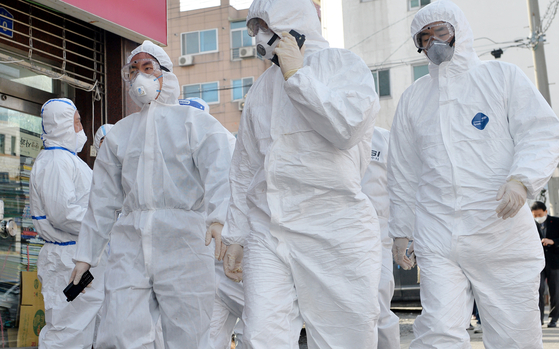
On the afternoon of the afternoon of the afternoon of the 25th, an unlicensed facility affiliated with a religious organization in Jung-gu, Daejeon (IEM International School), a pile of 127 confirmed cases of the novel coronavirus infection (Corona 19) occurred. It is in control. Seong-Tae Kim/2021.
Last year, the Korean economy recorded -1.0% growth. He stepped back in the shock of the novel coronavirus infection (Corona 19).
According to the ‘2020 4Q and Annual Real Gross Domestic Product (Breaking News)’ released by the Bank of Korea on the 26th, last year’s real gross domestic product (GDP) was -1.0% (compared to the same period last year). It is the lowest level in 22 years since 1998 (-5.1%) during the financial crisis. This is a 0.1 percentage point better than the forecast (-1.1%).
Last year was the third time that the Korean economy experienced negative growth. It is the third reverse growth since 1980 (-1.6%) and 1998 when the oil shock occurred.
It was the power of the government that stayed at the minus but saved itself and reduced the fall. This is because the government (1.0% point) compensated for the growth rate forgotten by the private sector (-2.0% point) amid sluggish consumption, etc., reducing the impact. It is interpreted as the influence of the government’s increased spending and mitigating the impact, such as organizing an additional budget (additional budget) of 6,680 trillion won four times.
As economic activity was put on a brake due to social distancing to prevent the spread of Corona 19, consumption contraction continued, and domestic demand (-1.4% points) ate the growth rate. However, exports (0.4 percentage points), mainly semiconductors, improved, and the report card was slightly better than the original forecast.
Frozen consumption was confirmed by figures. Private consumption (-5.0%) turned to negative and reached the lowest level since 1998 (-11.9%). Government consumption (5.0%) continued to increase, but the increase decreased from the previous year (6.6%). Facility investment (6.8%) turned to positive after breaking through the negative growth of 2019 (-7.5%). The decline continued with the construction industry (-0.1%), but the decline narrowed.
Last year, exports (-2.5%) stepped back and entered the negative area. The figure is the lowest since 1989 (-3.7%). Income (-3.8%) continued to decline following 2019. By sector, except for the electricity, gas and water industry (6.1%), all other sectors continued negative growth.
Last year’s economic growth rate stopped at 1% negative growth thanks to advances in the fourth quarter of last year. The growth rate in the fourth quarter of last year was 1.1% (compared to the previous quarter). It continued positive growth following the third quarter (2.1%), which rebounded from the shock in the second quarter of last year (-3.2%).
Private consumption (-1.7%) and government consumption (-0.4%) continued to decline in the fourth quarter of last year, but exports (5.2%), mainly semiconductors and chemicals, increased along with construction investment (6.5%).
Reporter Ha Hyun-ok [email protected]
